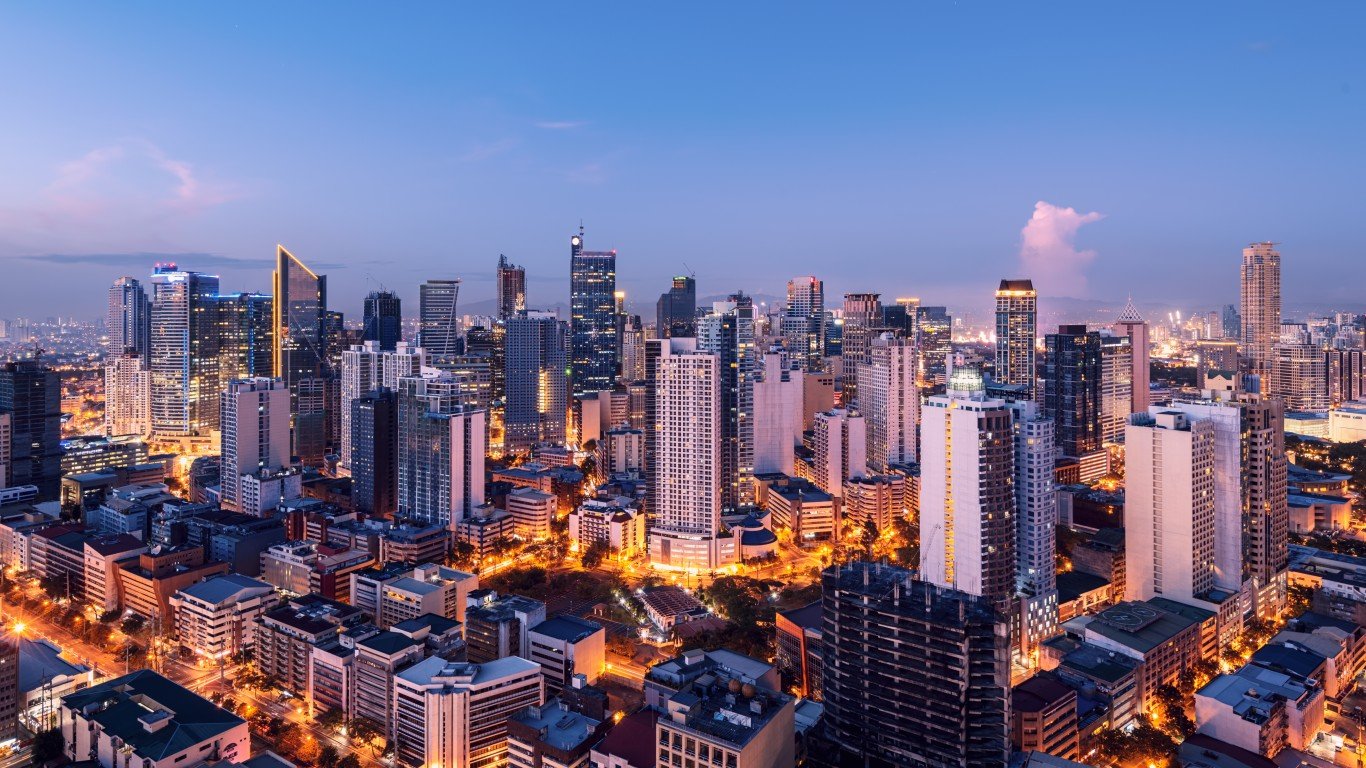
10. Manila, Philippines
> Est. population, 2050: 22.0 million, 52% growth from 2022
> Ecological threat level: 5 – Extremely High
> Air quality: 1 – Moderate
> Expected climate changes: Wetter
> Global peace index (1-5, most to least): 3.05 – Very Low Peace
> Estimated GDP in 2020: $257 billion
Manila is one of two Southeast Asian cities facing the most profound ecological threats from rapid urbanization, large numbers of people living in poverty, deterioration of water quality due to organic pollution, erosion of coastal habitats, overfishing, insufficient industrial and agricultural waste management. Flooding is a regular seasonal occurrence, exacerbated by both climate change and the dumping of solid waste into major waterways, clogging drainage systems.
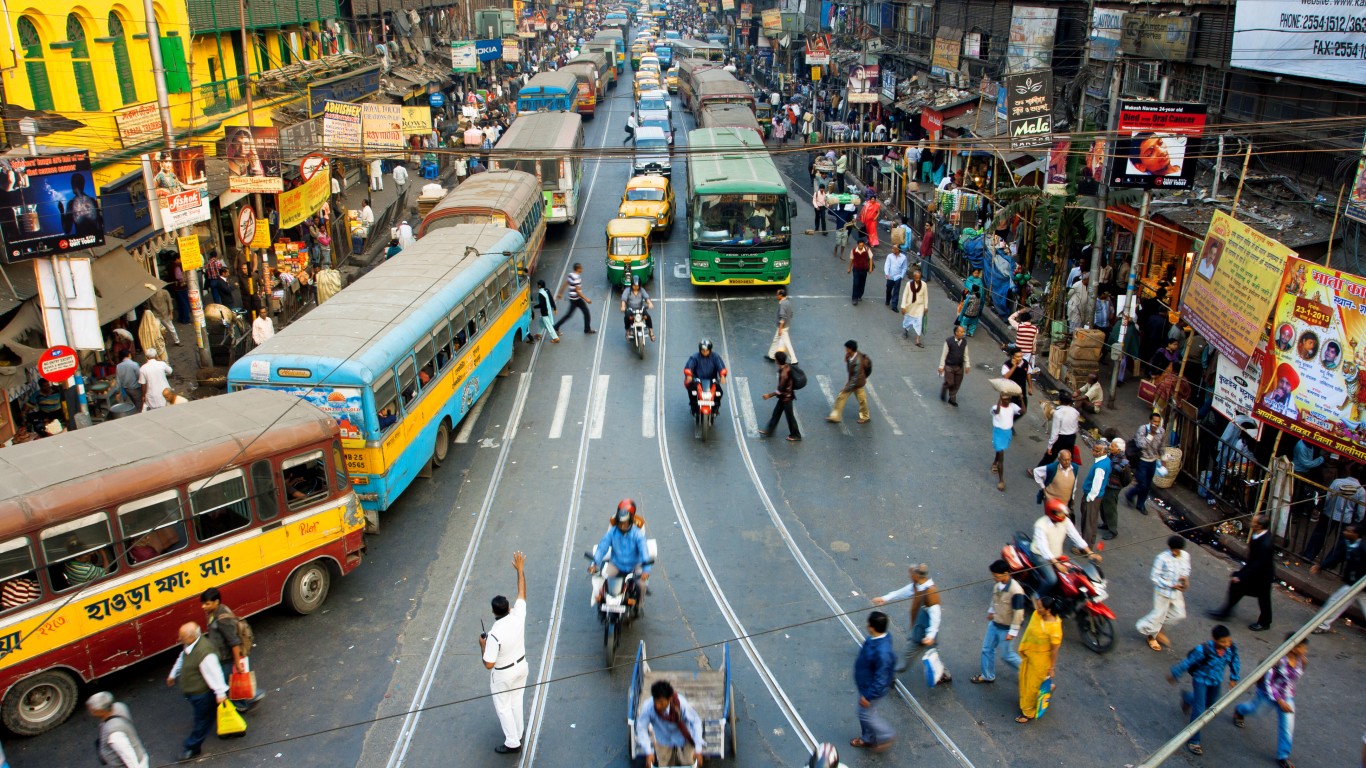
9. Kolkata, India
> Est. population, 2050: 23.4 million, 54% growth from 2022
> Ecological threat level: 3 – Medium
> Air quality: 3 – Unhealthy
> Expected climate changes: Drier
> Global peace index (1-5, most to least): 2.78 – Very Low Peace
> Estimated GDP in 2020: $224 billion
Kolkata, one of five Indian cities on this list, suffers from extremely high air pollution, with the smallest and most harmful particulate matter (emitted from vehicles, industrial activity, and burning wood and trash) nearly 12 times above what the World Health Organization considers healthy.
Situated on the Ganges River in east near Bangladesh, Kolkata is choked with traffic, densely populated with people living in poverty, and wreaked with air, water, and soil pollution. The city’s large leather tannery industry, a vital source of jobs, releases toxins into local waterways.
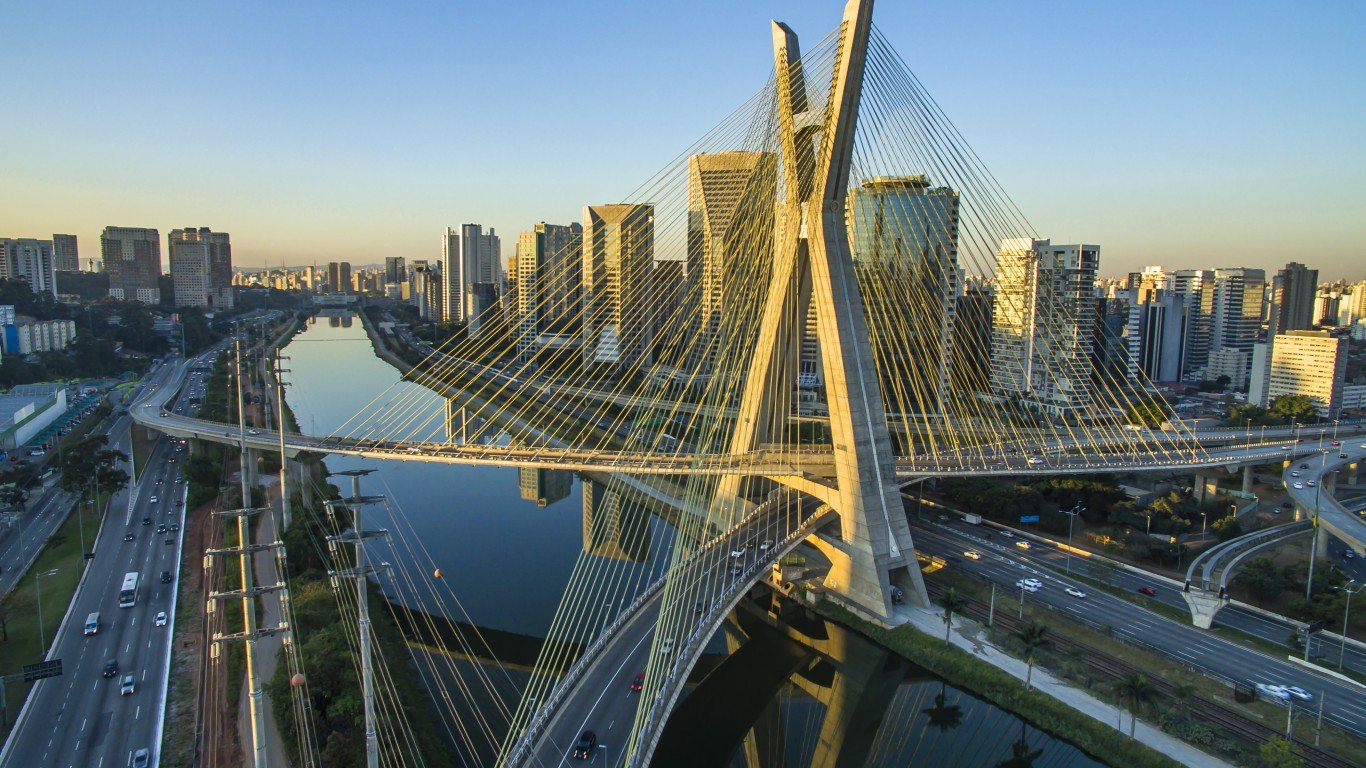
8. São Paulo, Brazil
> Est. population, 2050: 24.0 million, 7% growth from 2022
> Ecological threat level: 4 – High
> Air quality: 3 – Unhealthy
> Expected climate changes: Wetter
> Global peace index (1-5, most to least): 3.29 – Very Low Peace
> Estimated GDP in 2020: $411 billion
One of the world’s top five largest urban areas and South America’s largest city is wreaked with serious environmental issues in the areas of waste management, water quality, and emissions control. Like the other cities on this list, São Paulo is marked by overcrowded conditions and population growth that is outpacing development.
Climate change may cause the city to be “wetter,” but variable rainfall and continued rapid deforestation is causing more frequent droughts in this region of Brazil.
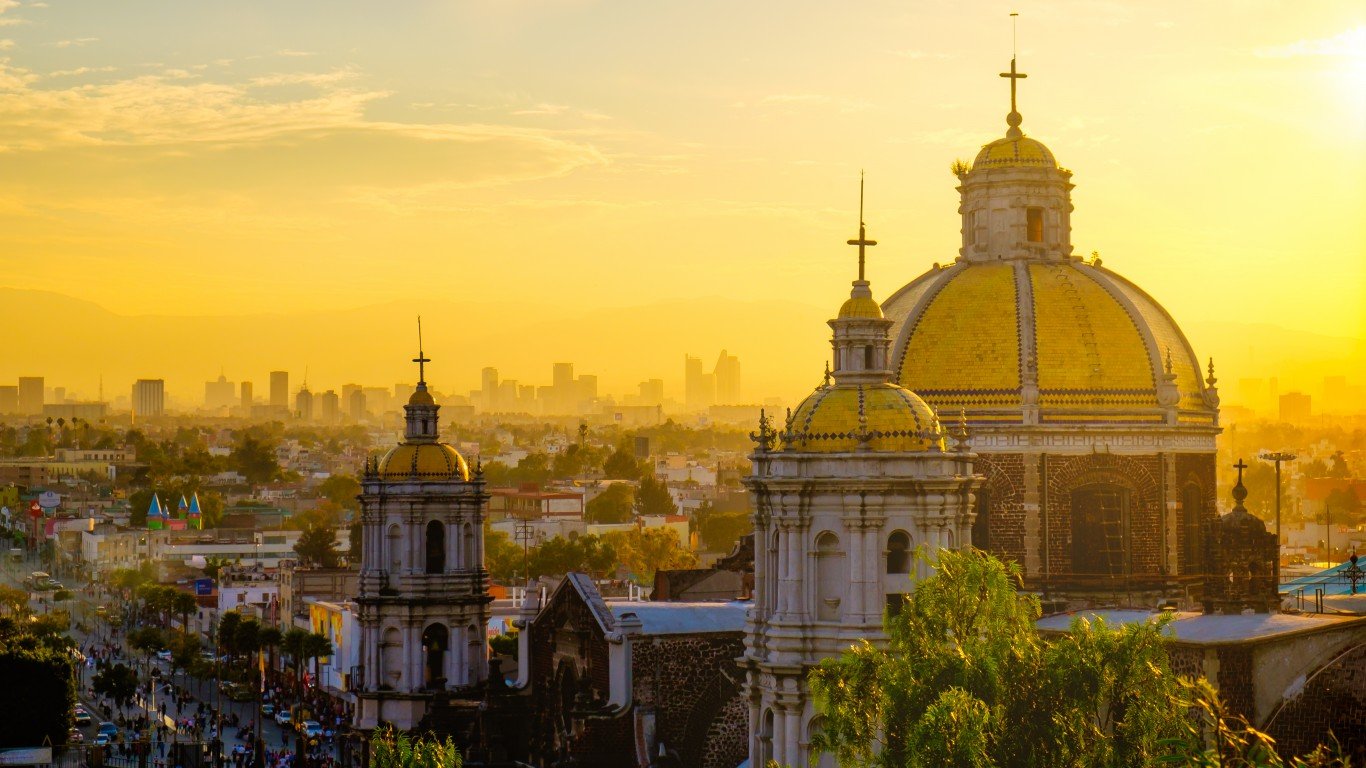
7. Mexico City, Mexico
> Est. population, 2050: 25.8 million, 16% growth from 2022
> Ecological threat level: 2 – Low
> Air quality: 3 – Unhealthy
> Expected climate changes: Colder, Drier
> Global peace index (1-5, most to least): 3.48 – Very Low Peace
> Estimated GDP in 2020: $608 billion
The largest city in North America by population is situated on a high plain ringed by mountains on three sides, which has long posed a distinct environmental threat from the city’s massive growth since the middle of the last century: cooler high-altitude air traps vehicular and industrial emissions close to the ground, especially during the city’s dry season in its winter months.
Water shortages are common and are expected to worsen as the city sucks up available reservoirs and the climate gets drier. According to the report, parts of Mexico City are sinking by 50 centimeters per annum.
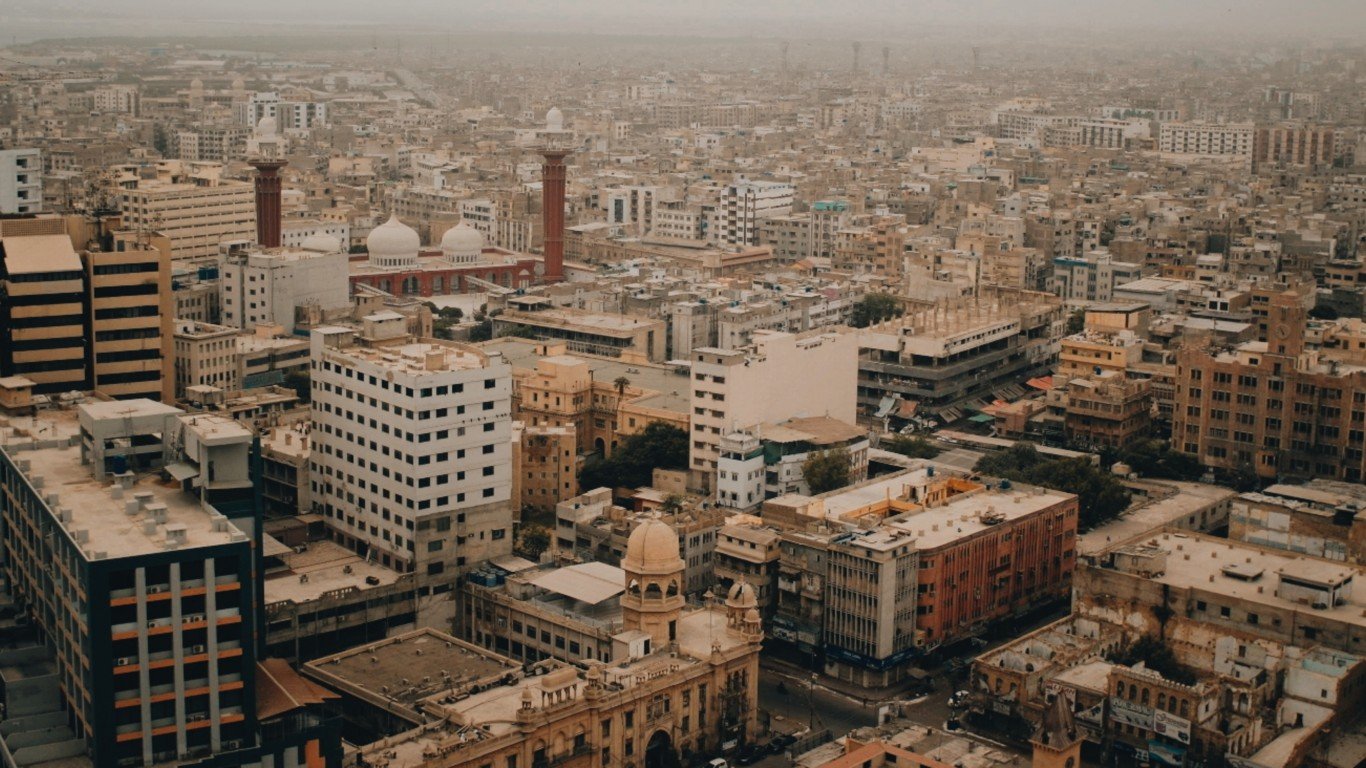
6. Karachi, Pakistan
> Est. population, 2050: 26.6 million, 57% growth from 2022
> Ecological threat level: 4 – High
> Air quality: 3 – Unhealthy
> Expected climate changes: Hotter, Wetter
> Global peace index (1-5, most to least): 3.05 – Very Low Peace
> Estimated GDP in 2020: $127 billion
Pakistan’s largest city by population has seen the number of residents grow rapidly since the creation of the country in 1947 – from about 450,000 to 17 million, including both city residents and people living within the larger urban area of Karachi. As with other cities on this list, this alarming expansion of population is outpacing the city’s ability to provide controlled management of housing and civic infrastructure related to waste management, drainage, water quality, and air quality.





